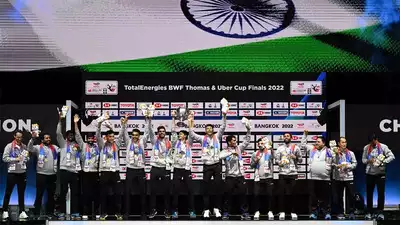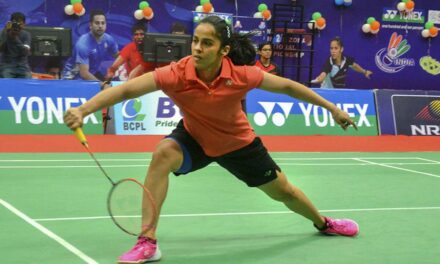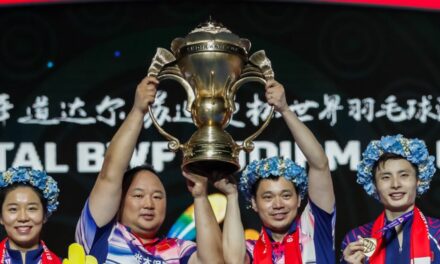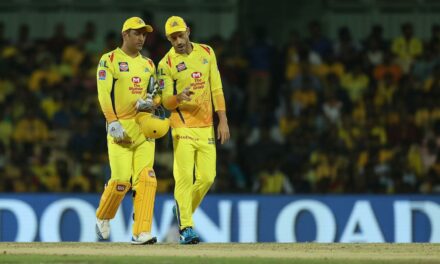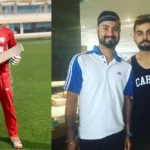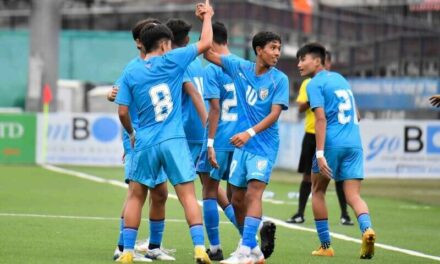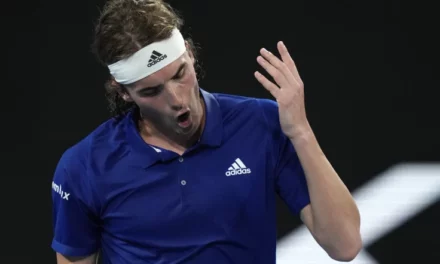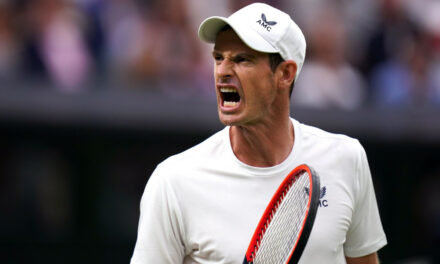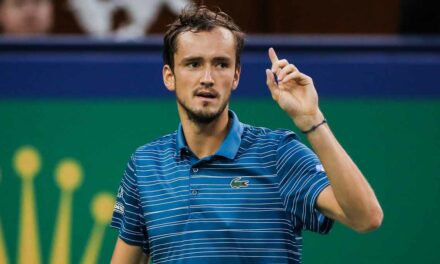
With college in mind, desi boy Samir Banerjee makes it to the Junior Wimbledon final
When Ashleigh Barty and Karolina Pliskova took to the Center Court for the women’s Singles final at Wimbledon, another match, two steps away from Court 1, was in full swing. This match ended just two minutes before the two-hour mark. And with a 7-6(4), 4-6, 6-2 victory, the American player of Indian origin Samir Banerjee reached the final of Wimbledon among juniors.
This was the 17-year-old’s second appearance at a junior Grand Slam. Yet even though he’s reached a Grand Slam title match, the Basking Ridge, New Jersey resident will leave the tour briefly to attend college at the Columbia University – where he will pursue a degree in either economics or political science.
His father Kunal explains the decision to follow what has been a stereotype for Indian parents encouraging their children to follow academic pursuits.
“We’re not any different, we want him to do well in his academics,” says Banerjee, who works in finance in the United States.
“He’s a solid student. For him it was always important to go to a good academic institution as well as tennis. There are many colleges here that have a good tennis program, but we wanted a combination of strong tennis and academics. Of the prestigious Ivy League colleges, Columbia is the best at tennis.”
Taking the college route
The Manhattan-based College has been defending champion for the past six years in the inter-Ivy League tennis events. Going through the college route has not been an alien concept for the modern tennis player. The likes of former top 10 players like John Isner, Kevin Anderson, Jack Sock, and even seven-time Grand Slam singles champion John McEnroe had competed at the National Collegiate Athletic Association (NCAA) – the American inter-university competition. Indian players too – Mahesh Bhupathi, Somdev Devvarman, Prajnesh Gunneswaran – have followed the same path.
And the Banerjee family by no means has shut the door on Samir eking out a tennis career for himself. “It’s a difficult sport, but a degree from Columbia will always be with him, it’ll always help him. It has good value,” Banerjee says.
“We’re just being realistic because we know how difficult the professional tour is. We’re educationally focused and we expect that from both our kids. But if he takes off in tennis, we haven’t shut the door. We’re not going to hold him back if he tells us he wants to give it a go. We will support him for whatever time it takes to make a mark.”
Family support hasn’t been lacking for the second generation American – who is ranked 19 in the junior ITF standings, the fourth from his country in the top 20. His father, born in Assam and mother (who works in pharmaceuticals) from Andhra Pradesh, had moved to the United States in 1989 and 1986 respectively. They have a daughter as well who is currently in her third year of college.
They watched the “nerve-wracking” Wimbledon experience unfold as their son pulled off five wins on the trot to get to the singles final. “This was unexpected. He basically wanted to win one match. He lost in the first round at the French Open, so the goal was to just play and get one Slam win under the belt. But he’s on a run now,” Banerjee adds. The youngster also reached the doubles semi-finals.
Yet it’s not entirely surprising given that Samir plays a game suited to grass. He doesn’t stick to the baseline, but likes to come up to volley and finish off points early. His backhand has been his biggest shot, but “there (is) a tangible difference in his forehand” after a short training stint at the Alexander Waske Academy in Germany.
The last time an Indian player won a junior Grand Slam title was when Yuki Bhambri won the 2009 Australian Open. Before him, only Leander Paes (Wimbledon 1990, US Open 1991), Ramesh Krishnan (French Open and Wimbledon 1979) and Ramanathan Krishnan (Wimbledon 1954) have won junior singles Majors.

